Noggin returned for a second “Noggin Tuesday” at p:ear this week to make art, hold brains and answer questions…

LEARN MORE: Noggin @ p:ear
We’re visiting multiple mornings this spring, and this week’s eager volunteers included Jordan Ray, Jade Osilla and Aaron Eisen from Portland State University, and Noggin Resource Council member Joey Seuferling…

LEARN ABOUT DAY ONE: P:ear: “He LOVES this”
We’ve been painting different brain regions crafted from a puzzle-cut set of plywood pieces, often inspired by the knowledge of what each area does…

One young man was curious about the temporal lobe, and its role in recognizing objects. The yellow arrows below represent neural pathways (axons), and trace how visual information from our eyes first arrives in the occipital lobe, a chunk of cortex (the brain’s wrinkled outer “bark”) at the back (or posterior, or caudal end) of your head…

However, the neurons in primary visual cortex (V1) then project their own wiry axons into the temporal lobe, routing details about color, shape and form into regions that underlie our ability to quickly grasp what we’re seeing – faces, a specific face, cars, bikes, a cup of coffee…

Or tags! Can you make out the lettering above..? What do you see? Activity in your temporal lobes is attempting to integrate incoming visual input with “top down” assumptions and prior experience regarding expectation and context – and identify any meaningful characters, if they exist…
LEARN MORE: DON’T UNDERSTAND GRAFFITI? HERE IT IS TRANSLATED IN HELVETICA
LEARN MORE: How does the brain solve visual object recognition?
LEARN MORE: The Difference Between Street Art and Graffiti
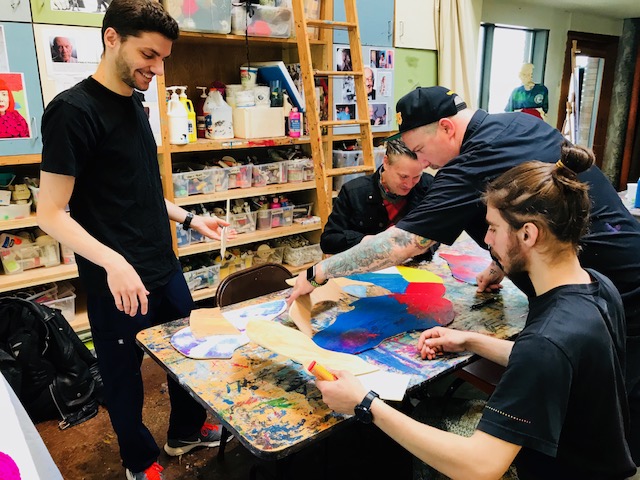
Young people at p:ear – and their irrepressible Art Programs Coordinator Will Kendall – had many questions about the brain, and how both neural and social networks are essential for routing information effectively and allowing our brains and communities to thrive…
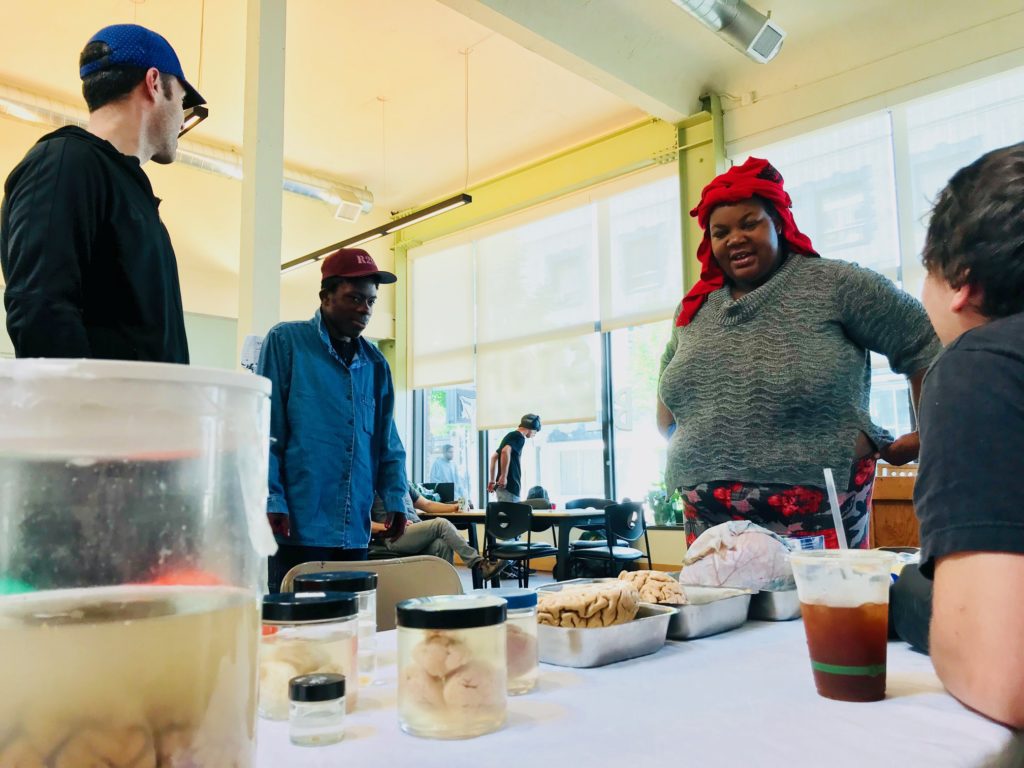
What causes “ear worms?” One person was curious to learn more about songs that get stuck in your head, musical hallucinations that keep playing, over and over, and are often hard to ignore…
“This is America,” by Childish Gambino (Donald Glover) had been her recent companion – and potentially one for others, too. It’s a timely and compelling song, with memorable phrasing and vivid, powerful, unsettling and historically resonant imagery in the video…
Involuntary (or intrusive) musical imagery (IMI) is one research term for this phenomenon, which is also known as “stuck song syndrome.” It is remarkably common, with most of those surveyed in studies reporting the experience. For many it’s not overly intrusive, but for some it can be persistent and unpleasant, and the severity of symptoms is higher amongst those with obsessive compulsive disorder (or OCD)…
LEARN MORE: Musical obsessions: a comprehensive review of neglected clinical phenomena
LEARN MORE: Music in Everymind: Commonality of Involuntary Musical Imagery
LEARN MORE: Stuck song syndrome: musical obsessions — when to look for OCD
One fascinating paper examined the brain regions selectively engaged when a subject experienced musical hallucinations, using a technique known as magnetoencephalopgraphy (MEG). “Magneto” means magnet (and, of course, Ian McKellan), “encephalo” is brain, and “graph” means to write or record.

IMAGE SOURCE
Groups of firing neurons generate magnetic fields that can be detected and graphed, and researchers compared brain activity when intrusive musical hallucinations were reportedly present with activity recorded when those hallucinations were somewhat suppressed…

With musical hallucinations there was a change in activity in the anterior superior temporal gyrus, a cortical area in the temporal lobe critical for processing sequences of perceived pitches…

Additional changes were also seen in motor planning areas (often present in the brains of those listening to music, too, as music makes you move!) and in posterior (towards the back), medial (middle) areas of the brain, specifically regions involved in the “default” network, a set of interconnected areas involved in rumination, planning and memory…
LEARN MORE: A brain basis for musical hallucinations
LEARN MORE: The brain’s default network: anatomy, function, and relevance to disease
One medial brain area selectively engaged in the ear worm experience is a default network region known as the retrosplenial cortex, which has been linked to experiencing “permanent” visual landmarks; say, the Pioneer Courthouse at one end of Portland’s Pioneer Square…


LEARN MORE: What does the retrosplenial cortex do?
According to the study authors, “musical hallucinations can be considered a permanent ‘landmark’ in the auditory scene once the music has been present for a certain length of time…” Pretty amazing stuff…
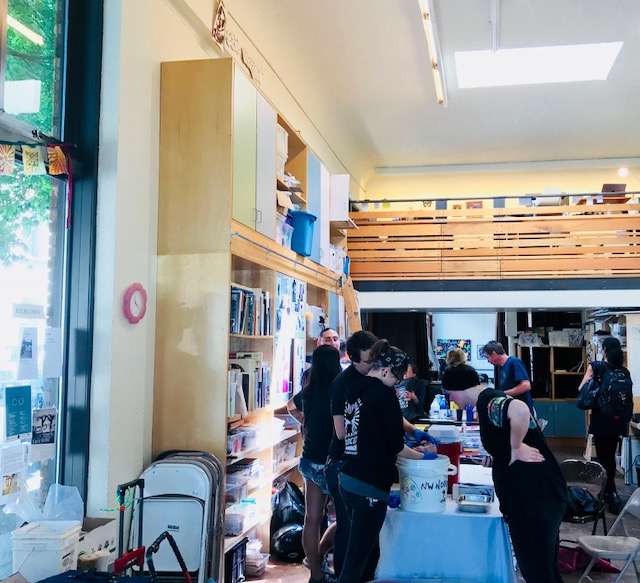
We love p:ear. There are so many resourceful, thoughtful, intense, curious young people with talent, skill and ability, and we get some of our most interesting questions here…
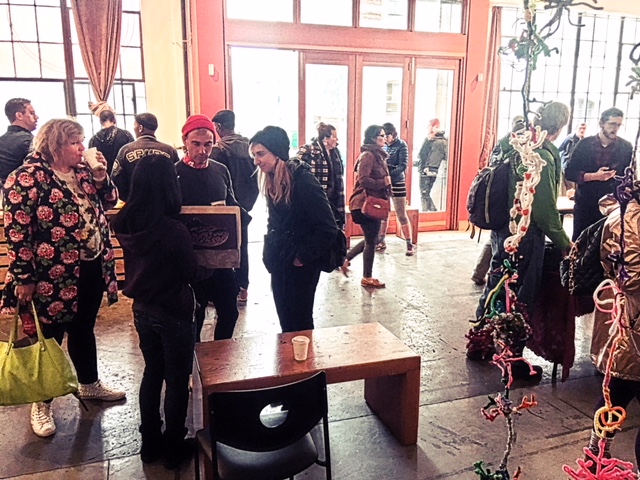
LEARN MORE: Landscapes of the Brain: Seeing us all through research & art
The p:ear website acknowledges that “while many factors lead to homelessness, the overwhelming contributor is a lack of connection…these kids deserve opportunities and experiences in which to gain the confidence, skills and pride required to establish necessary economic stability while transitioning into contributing adult members of our community.”
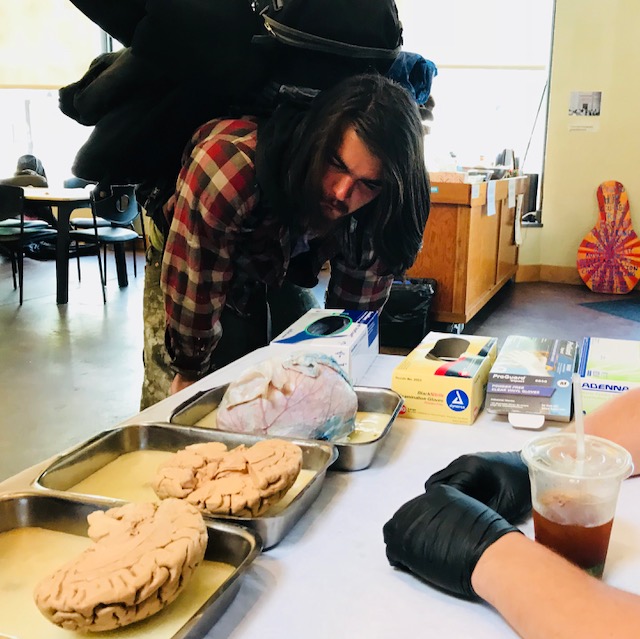
LEARN MORE: Factors Associated with Community Participation among Individuals Who Have Experienced Homelessness
LEARN MORE: How to open and sustain a drop-in center for homeless youth
We’ve learned this is true, from countless visits to “academic priority” K-12 classrooms, where students don’t always know why they’re focusing on specific, often uninteresting material chosen by textbook and assessment publishers that better serve and promote those with existing means and connections, and discount the creative, innovation-rich diversity in background, potential, talent and approach of all developing young brains…

LEARN MORE: Teaching More by Grading Less (or Differently)
LEARN MORE: Standardized tests for everyone? In the Internet age, that’s the wrong answer
LEARN MORE: Noggin Bloggin
While we examined real cerebrums, painted brain regions informed by evidence-based details of structure and function, and answered insightful questions, more actionable knowledge was conveyed, and more connection and engagement enjoyed, driven by actual motivated interest – than you’d get with yet another scripted lesson plan devised by a “school of education” backing yet another for-profit publisher of texts and tests…
LEARN MORE: Common Core: ‘the gift that Pearson counts on to keep giving’
LEARN MORE: Houghton-Mifflin exec: Common Core is all about the money
LEARN MORE: Educators Carefully Watch Pearson as It Moves to Sell K-12 Curriculum Business
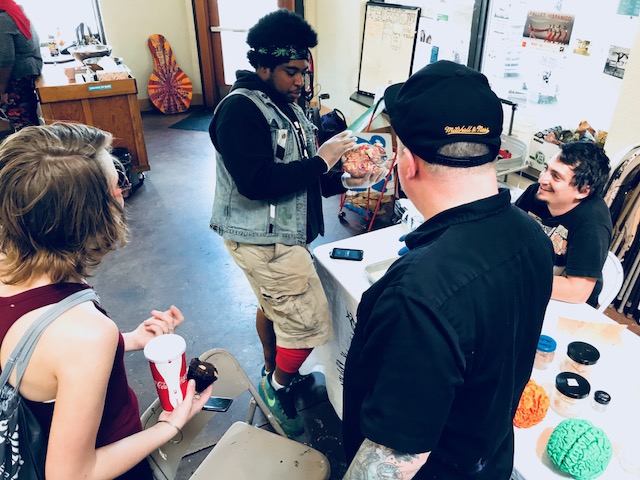
And we do this as volunteers. Our undergraduates and graduates study the brain, and make art and music, and serve as terrific role models and resources to answer real questions, and explore concepts and ideas creatively with students conditioned to expect failure in educational environments. Those schools of “education” run yet another study, or sell yet another survey, textbook or test to reinforce yet another inscrutable academic hypothesis that means little to kids in actual classrooms – or in important community places like p:ear.
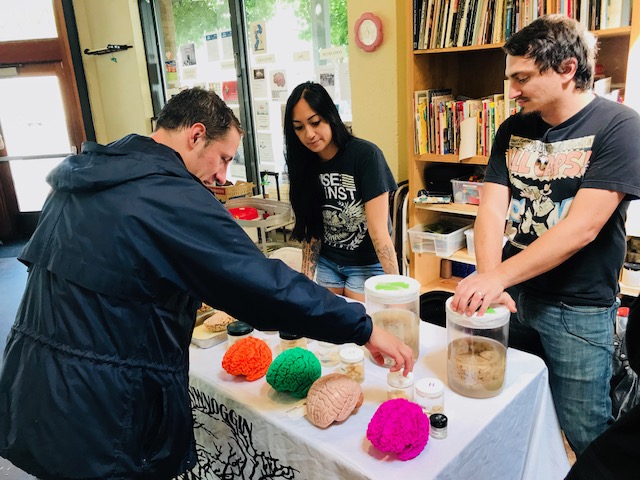
LEARN MORE: Why don’t teachers use education research in teaching?
Our outreach is informed by research on the brain and behavior, and like p:ear, how direct engagement and multi-generational, cross-disciplinary exploration of concepts and ideas attracts diverse learners, builds confidence and implicit skills, and leads to better understanding, retention, discovery, community engagement and success …
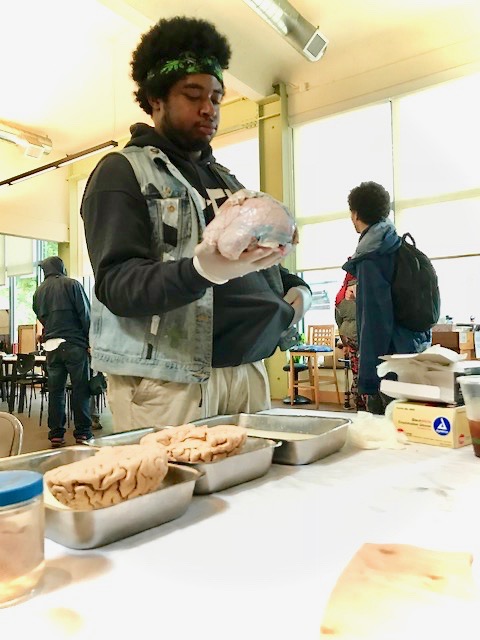
LEARN MORE: Better schools with improv and art

Many thanks to our community-minded volunteers, and to the tremendous young people and staff at p:ear..!


